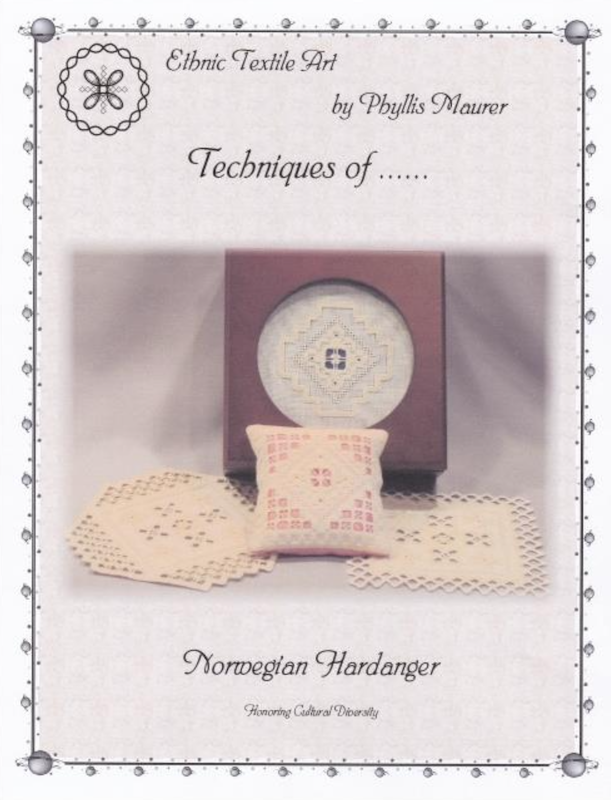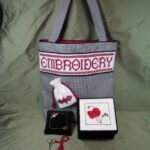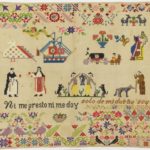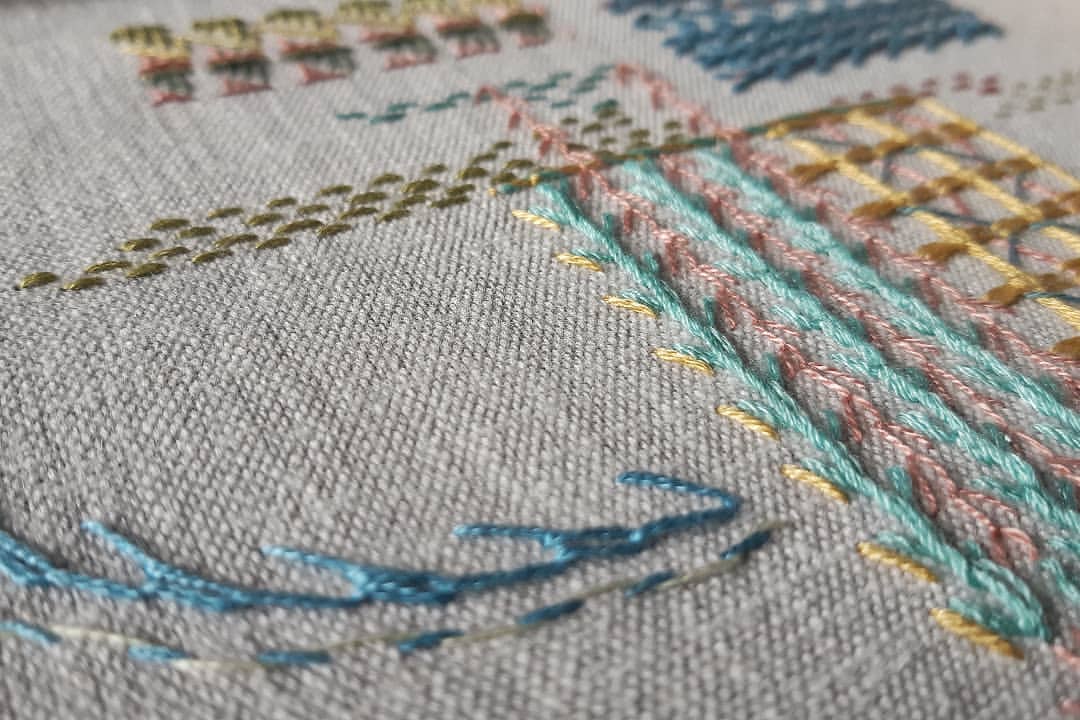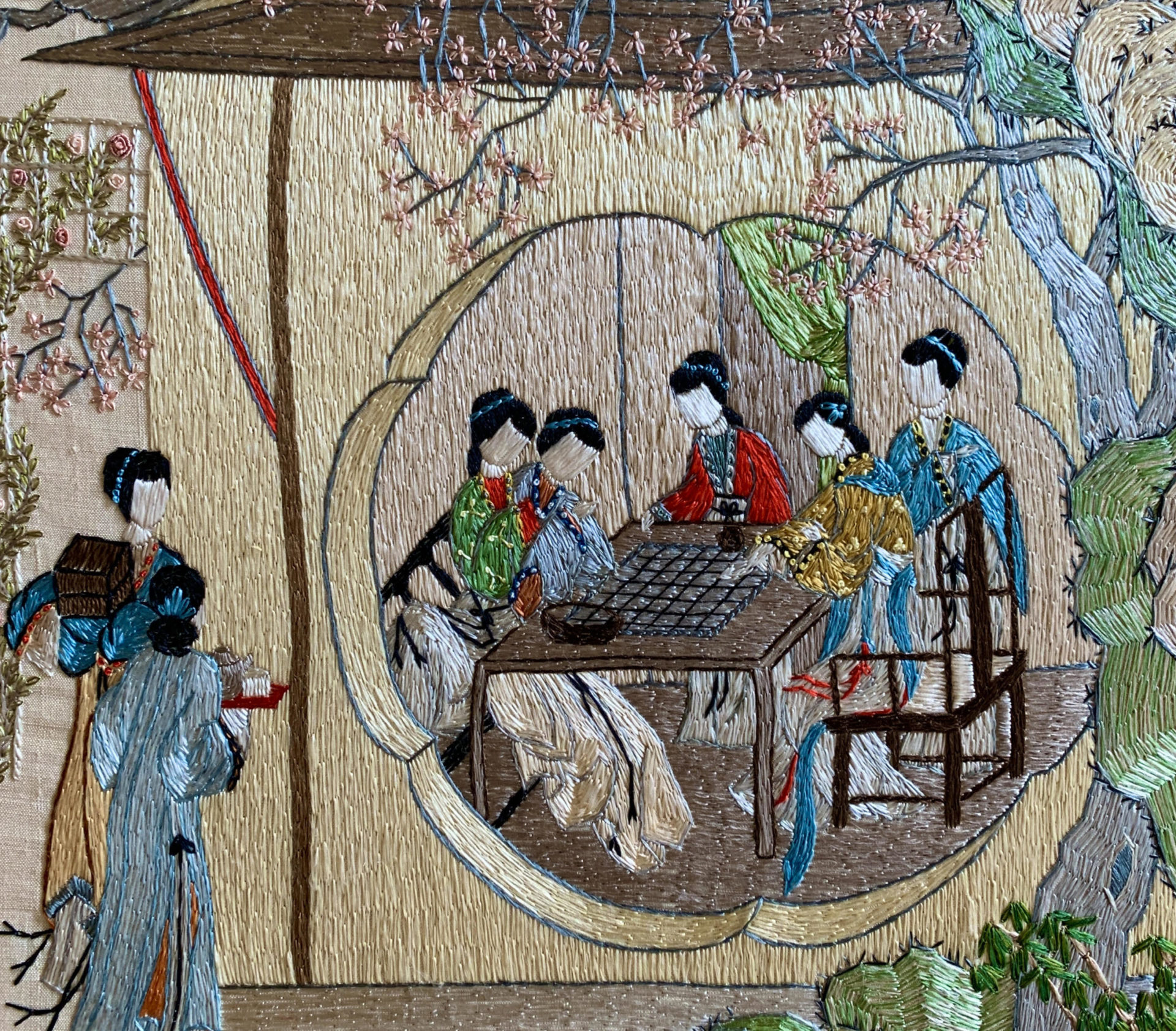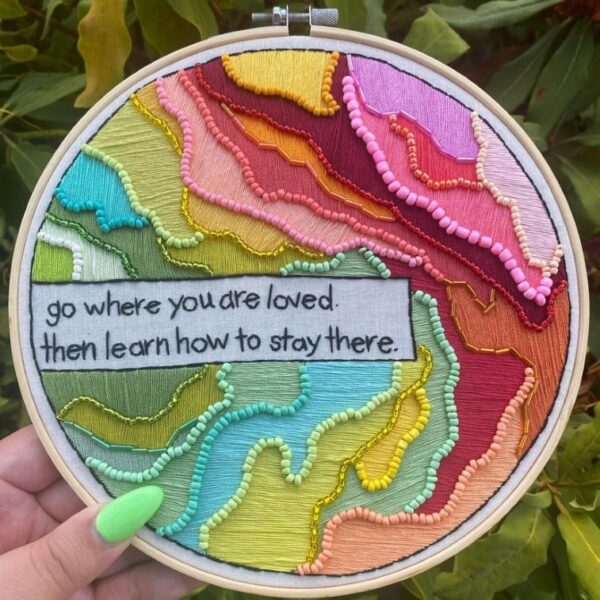Technique: Hardanger
Place of Origin: Norway
Earliest approximate date: 1700s
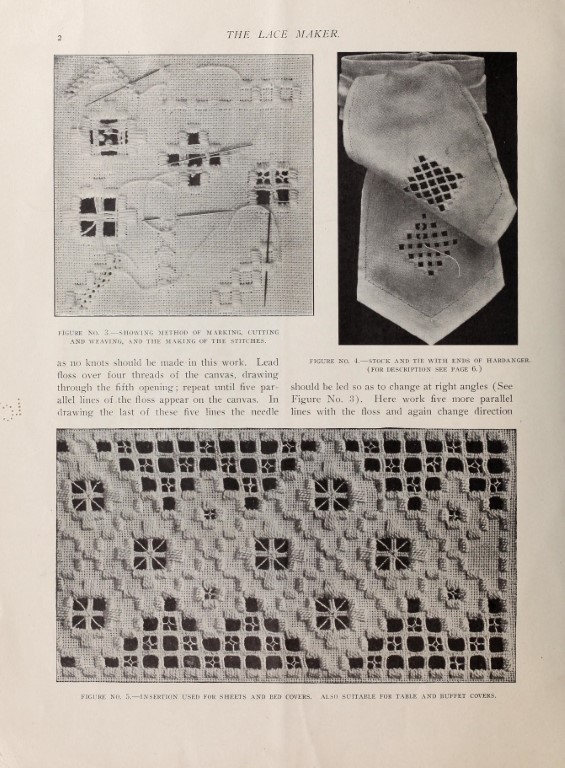
The Italian embroidery style Reticella (Italian for “small net”) is a relative to Hardanger. During the Renaissance, Reticella embroideries became a common trade item between Italy and Norway. However, few could afford the finely detailed, expensive Reticella embroideries. The beautiful designs were reserved for nobility. As a result, the Norwegian people adopted their own drawn-thread embroidery style: Hardangersøm. It was originally called Norwegian Drawn Work.
Materials, Techniques, and Stitches:
The Hardanger region informed the development of traditional Hardanger embroidery. The people of Hardanger grew, carded, spun, and wove their own flax into linen fabric, which was then embroidered and made into clothing and household items.
Traditional Hardanger fabric was even-weave linen in very small counts—usually between 36 and 55 count. Linen was also used for the thread, and often in white, cream, or the natural gray of the linen fiber. This resulted in Hardanger’s oft-used sobriquet: whitework embroidery.
Hardanger embroidery features drawn-thread and counted thread techniques worked with linen thread on linen fabric of the same color. Hardanger embroidery motifs were geometrical rather than pictorial, often worked on the diagonal, and featured traditional shapes like squares, rectangles, triangles, crosses, zig zags, diamonds, and the eight-pointed star.
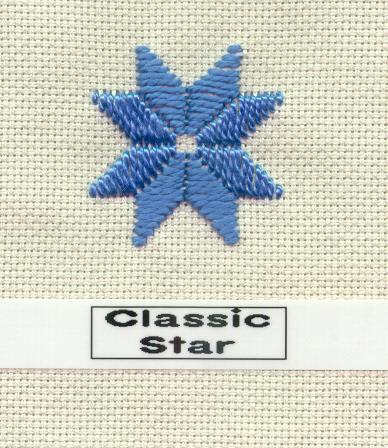
The most recognizable Hardanger motif is probably the Kløster or stitch, composed of blocks of 4 satin stitches, with 5 parallel stitches worked for each side of the block. The purpose of Kløster stitch is to create a framework with a reinforced center inside the block that can then be safely cut away. The blocks can be left empty, or embellished with needleweaving or picots.
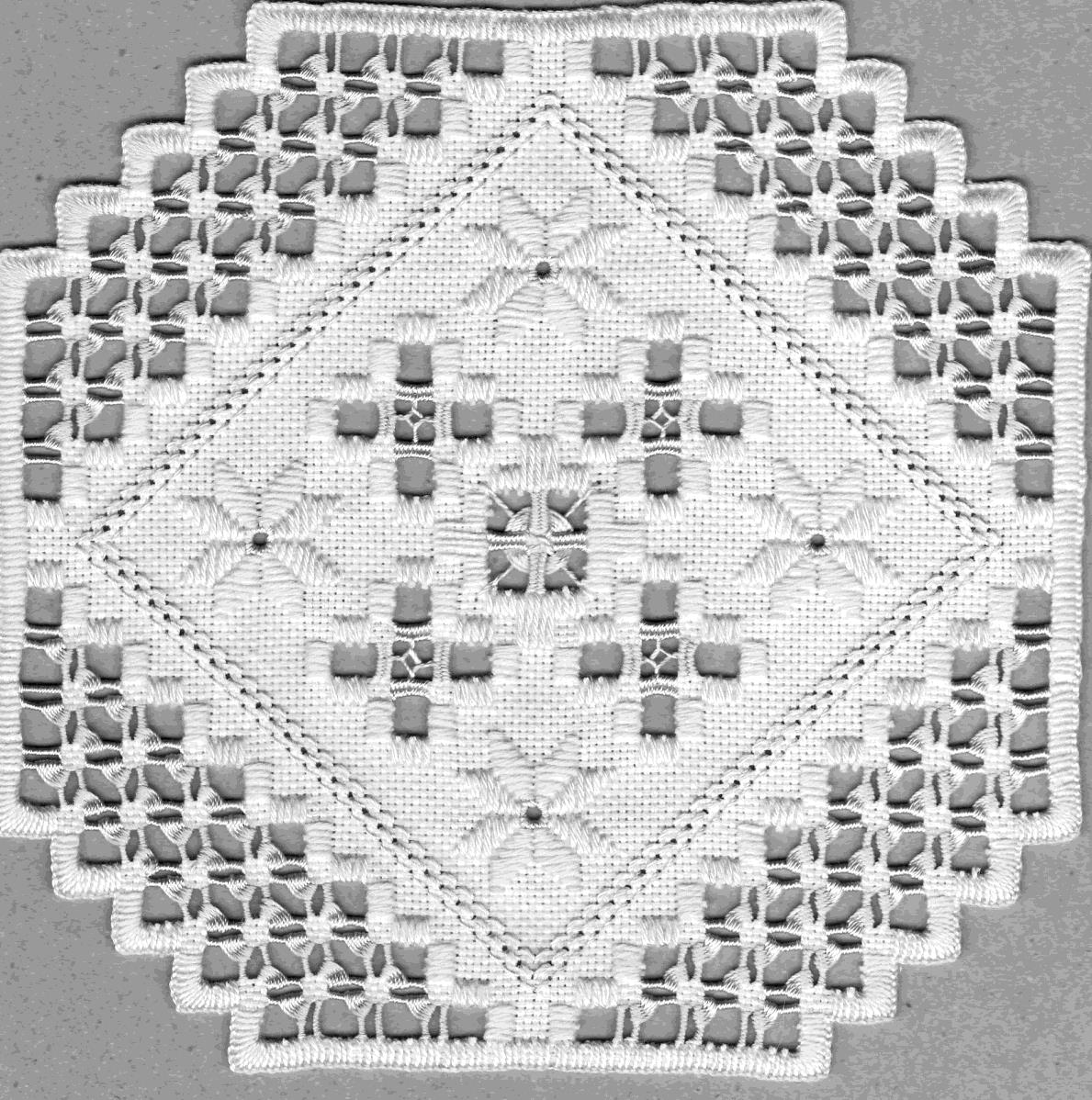
Stitches used in Hardanger embroidery include Algerian Eye Stitch, Buttonhole Stitch, Cable Stitch, Four-Sided Stitch, Picot, Satin Stitch, Running Stitch, Wrapped Bars, and other counted thread and drawn thread stitches. Explore stitches used in Hardanger embroidery in the RSN Stitchbank.
Interested in learning more about Hardanger embroidery? Explore Techniques of Hardanger Embroidery – Ethnic Textile Art by Phyllis Maurer and browse our classes featuring Hardanger, like Beginner’s Hardanger and The Princess and the Pea with Marion Scoular. A 1994 book titled Hardanger by Marion Scoular is available for sale directly through her. You may email her for more information.
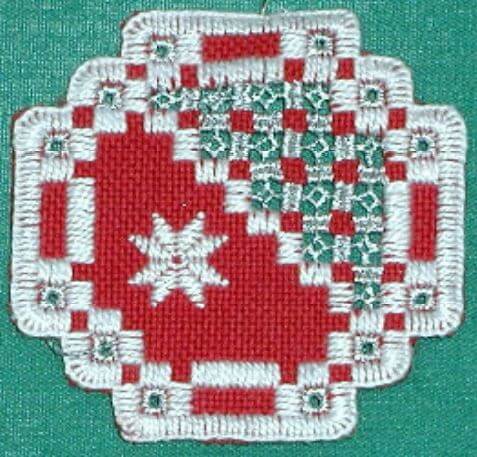
The Hardanger Wreath (above) is also available to EGA members as a free project in the Petite Projects Library.
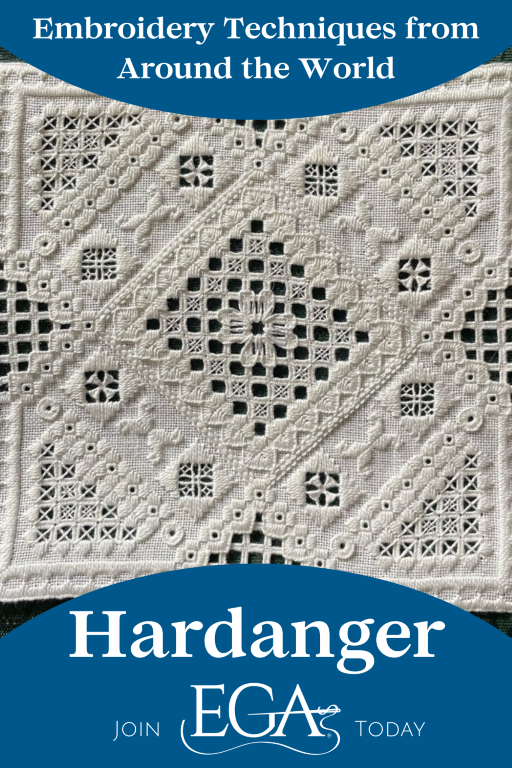
Sources
Maurer, P. Techniques of Norwegian Hardanger — Ethnic Textile Art. EGA. https://egausa.org/product/techniques-of-norwegian-hardanger-ethnic-textile-art-by-phyllis-maurer/
Stoll, V. (n.d.). History of Hardanger Embroidery. Vera Stoll Hardanger Design. https://web.archive.org/web/20120316202712/http://www.hardanger-stoll.com/?page=geschichte&language=us
Gostelow, M. (1983). Embroidery: Traditional designs, techniques, and patterns from all over the world. Arco Publishing, Inc.
(n.d.). Hardanger. RSN Stitchbank. https://rsnstitchbank.org/technique/hardanger
Vainius, R. (n.d.). The History of Hardangersom (Hardanger) Part I. The Caron Collection. http://www.caron-net.com/apr99files/apr99fea.html
Stanton, Y. (n.d.). The History of Hardangersom (Hardanger) Part I. Vetty Creations. https://vettycreations.com.au/white-threads/2016/07/05/myth-busting-hardanger-fabric/
